

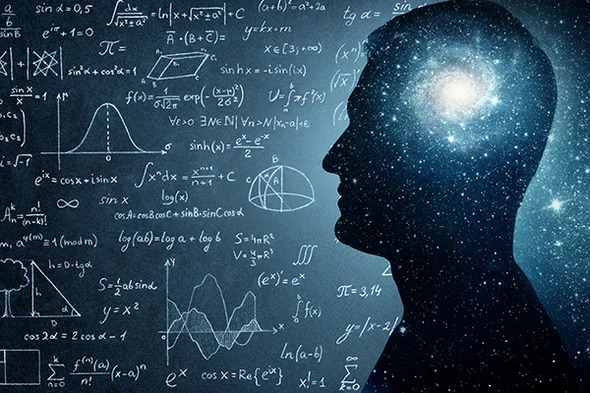
“The great book of nature is written in mathematical language.”
Galileo Galilei
“In the Beginning” by Hans Zimmer and Lorne Balfe (courtesy of College of Random):
“In fact, mathematics is the closest that we humans get to true magic.
How else to describe the patterns in our heads that — by some mysterious
agency — capture patterns of the universe around us?”
Ian Stewart
Courtesy of Cristóbal Vila:
“Algebra is but written
geometry and geometry is
but figured algebra.”
Sophie Germain
mathematician
Courtesy of TIFF Originals:
I have faith in reading’s power and the learning and imagination it nourishes. There is a danger that in our in-the-moment news feeds, the time of selfies obsession defines identities, which hide from our view the complexity of feelings and ideas that books demand we quietly and determinedly engage in. That is why I have started the Literary Series, and I am elated by the response. Thank you. I will bring out more books about extraordinary people whose stories can expand our lives in the way love does, making us more thoughtful and generous, braver, more alert to the wonders of the world, more wise, kinder. Today, I am continuing with the life of an extraordinary man, a Genius, SRINIVASA RAMANUJAN.
In his book “Ignited Minds”, renowned scientist Dr A.P.J. Abdul Kalam wrote: “Then comes to my mind the greatest of all geniuses ever known and acknowledged and living within our present memory – Srinivasa Ramanujan. He lived only thirty-three years (1887-1920) and had no practical formal education or means of living. Yet, his inexhaustible spirit and love for his subject enabled him to make a vast contribution to mathematical research and some of his contributions are still under serious study, engaging the efforts of mathematicians to establish formal proofs. Ramanujan was a unique Indian genius who could melt the heart of as rigorous a mathematician as Prof. G.H. Hardy of Trinity College, Cambridge. In fact, it is not an exaggeration to say that it was Hardy who discovered Ramanujan for the world. Why do not our reputed scientists locate another Ramanujan in our schools? Oh, my friends why don’t you in every field integrate and grow instead of differentiating!
“Every integer is a personal friend of Ramanujan”, one of the tributes to Ramanujan said and it was no exaggeration. Prof. Hardy, while rating geniuses on a scale of 100, put most of them in the range of around 30, giving a rating of 60 to the rare exceptions. However, for Ramanujan, he suggested, only the value of 100 will fit. There can be no better tribute to either Ramanujan or to the Indian heritage. Ramajun’s work covers vast areas including prime numbers, hyper geometric series, modular functions, elliptic functions, mock theta functions, even magic squares, apart from some serious work on the geometry of ellipses, squaring the circle and so on.”


I am going to start Ramanujan’s story where I left in Part 1 last week. G.H. Hardy urged several influential people in Madras to send Ramanujan to England to enable him to progress in his mathematical research. He was informed that it was not possible owing to Hindu religious beliefs. I read in Gandhi’s autobiography what they were but as they are no longer in use, I will move on. Hardy didn’t give up on his decision to bring Ramanujan to Cambridge. A colleague of his, E.H. Neville, a mathematician, was going to deliver twenty-one lectures on differential geometry at Madras University. Hardy had a secret desire in his mind that Neville would be able to bring Ramanujan to Cambridge with him. At the end of December 1913, Neville came to India and arrived in Madras around New Year’s Day in 1914. Ramanujan was introduced to him after the first lecture. The two became great friends in a very short time. Ramanujan showed him the notebooks, he had kept from his childhood. Now, he had no hesitation to entrust them to Neville to take them back to Cambridge, and to Hardy.

Neville realised that the notebooks were priceless and beyond the comprehension of ordinary mathematicians. Now, he too joined in campaigning for Ramanujan going to England. Any expenditure would be taken care of, he wouldn’t need to sit any entry exams (which was Ramanujan’s worry), and his vegetarian diet would be respected. A few days before, Komalatammal had a dream that her son was seated among white people and the goddess Namagiri advised her not to stand in the way of her son’s progress. And so, although an orthodox Hindu Brahmin woman, she gave her consent for Ramanujan’s going to England. Despite having his mother’s permission, Ramanujan had no peace of mind; he wanted direct consent from the goddess Namagiri.
The temple at Namakkal
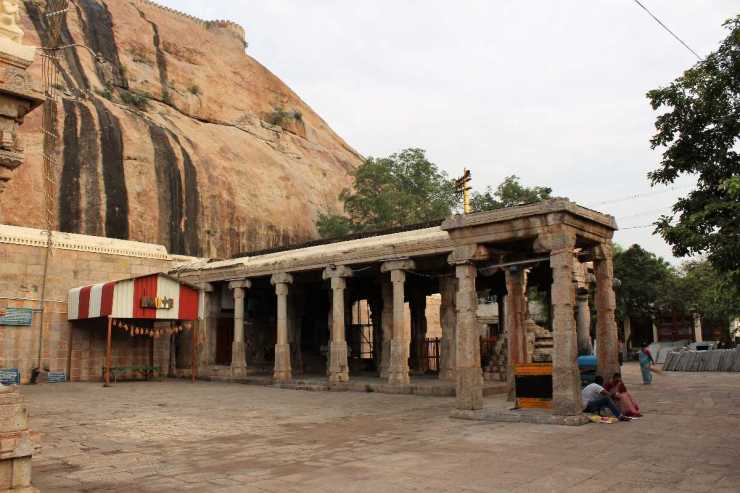
After a few days, he decided to go to the city of Namakkal, eighty miles west of Kumbakonam, with a friend. They slept in the grounds of the temple for three nights. Nothing happened on the first two nights, but on the third night, Ramanujan rose from a dream and awoke his friend in the dead of night. “I have received the direction for foreign travel from the goddess in a flash of brilliant light”, he said. His profound devotion to the goddess Namagiri Lakshmi and her direction allowed him to devote himself to progressing his mathematical work in England. It had to happen. “It all makes sense”, he said to his friend: the goddess appeared to him a long time ago in a vision, proposing a mathematical formula that he would have to verify. He described how while asleep, he had an unusual experience: “There was a red screen formed by flowing blood, as I was observing it. Suddenly a hand began to write on the screen. I became all attention. The hand wrote a number of elliptic integrals. They stuck to my mind. As soon as I woke up, I committed them to writing.”
Namagiri*

Ramanujan was ready to travel by ship to England but the cost of the passage was refused by the authorities. Again, Ramanujan had many champions at Cambridge. Richard Littlehailes, an Oxford-educated professor of mathematics at Presidency College, asked Francis Dewsbury, registrar, to grant Ramanujan a 250 pounds per year scholarship and 100 pounds for western dress and booking passage to England. He wrote, “Ramanujan is a man of most remarkable mathematical ability, amounting I might say to genius, whose light is metaphorically hidden under a bushel in Madras.”
At that time, Lord Pentland was the governor of Madras. He ruled over 40 million people and had the view that a person should be given the opportunity for his full development. A year before he had played a vital role when Ramanujan had obtained his first scholarship, and so he gladly recommended the higher scholarship needed.
Lord Pentland
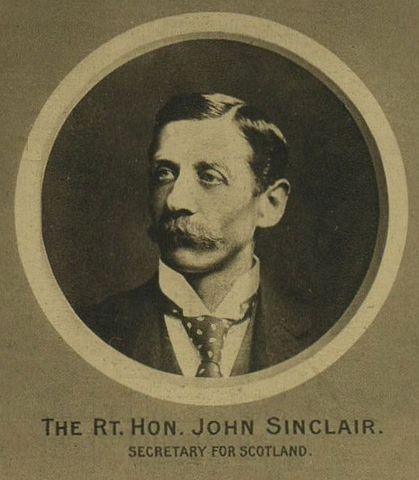
One day, in her mother-in-law’s absence, while they were in a temple, Janaki urged Ramanujan to take her with him to England; he refused as he was advised not to, adding that if she came with him, he would not be able to concentrate on mathematics. On the 14th of March, Ramanujan accompanied his wife and mother to Egmore station in Madras to send them to Kumbakonam, his hometown. His eyes filled with tears; it was uncertain when he would see them again.
Egmore railway station in Madras
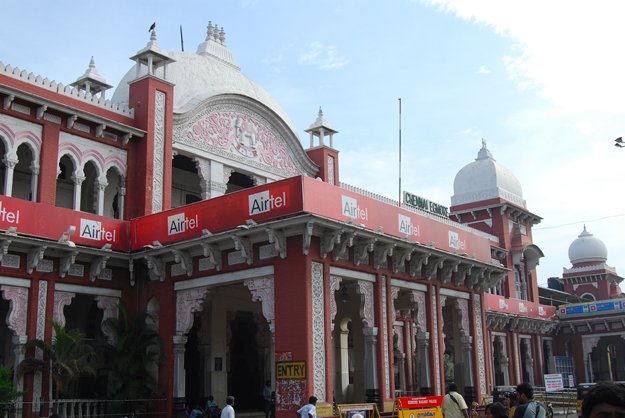
Ramanujan received a second-class ticket for his voyage from Binny & Co. on 26 February. On 11 March, Sir Francis wrote to the steamer company asking for a vegetarian diet to be provided for Ramanujan. Now, he had to change himself into a European gentleman in a short few days. His friends and well-wishers took responsibility to transform him. One ordered a haircut in the European style. His kutumi, the long bunched-up knot of hair at the back of his head, was cut off, although he wasn’t very pleased with the result. Richard Littlehailes drove him around Madras on his motorcycle to buy a European suit in his size. Ramanujan’s friends arranged for him to live in a house that was European in style and he got there training at the breakfast table on how to use a knife and fork, which didn’t make him happy.
He was perplexed by western clothes bought for him and didn’t know how to wear them. Making a knot on his tie was a puzzle and his attempts at learning become a scene of amusement to everyone present in the room. When he later sent a photo from England attired in a suit and tie to his mother, she didn’t recognise that it was him.

Srinivasa Iyengar, the advocate general, and his school friend arranged an official send-off in Ramanujan’s honour on the morning of his departure; Sir Francis Spring, Narayana Iyer, Professor Middlemast, Kasturiranga Iyengar, publisher of the Hindu, and many other respected people were present. Ramanujan was introduced to everyone present. Narayana exchanged his slate with Ramanujan’s as a memorial. J.H. Stone, Director of Public Instruction of Madras, wished him success and told him that he had written to his friends in England to take good care of him. While everyone was in a merry mood, tears rolled down from Ramanujan’s eyes, it was painful for him to leave friends, relatives, and his country for an uncertain time. At 10am, the S.S Nevasa began to drift away from the dock. This remarkable day was 17 March 1914.
“Sailing” by Rod Stewart (courtesy of Oidile Sednanref):
SS Nevasa
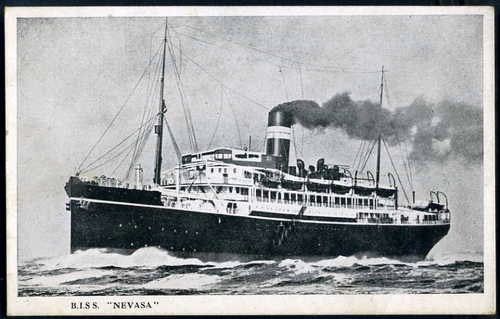
The SS Nevasa was quite big and its four decks airy and spacious. Ramanujan had not travelled by ship before, and the rolling, swaying and pitching were making him giddy and sick. Temporary relief came in Colombo harbour of Sri Lanka (then Ceylon).
Port of Colombo

Colombo (courtesy of Drone Footage):
After that, the ship entered the Arabian Sea after crossing Cape Comorin. As the sea was calm and smooth, Ramanujan began to enjoy his first trip to England. There were 200 passengers on board and Ramanujan spoke to some of them but not liking idle chit-chat, most of the time he spent in his cabin working on maths. The ship crossed the Arabian Sea and entered the Red Sea, where it anchored in Aden and Port Said, where the passengers were able to disembark briefly and send letters home.
Port Said

The ship was going to cross the Mediterranean Sea and finally anchored at Plymouth, the port in the South-West of England.
Port of Plymouth

At this point, leaving the ship and almost at Cambridge, one would have expected Ramanujan to have been exhilarated by the opportunities awaiting but he remained calm and quiet. Perhaps he followed the teachings of Gita, the Hindu religious book that extols the virtue of calm in every situation in life.
Cromwell Road, South Kensington, London
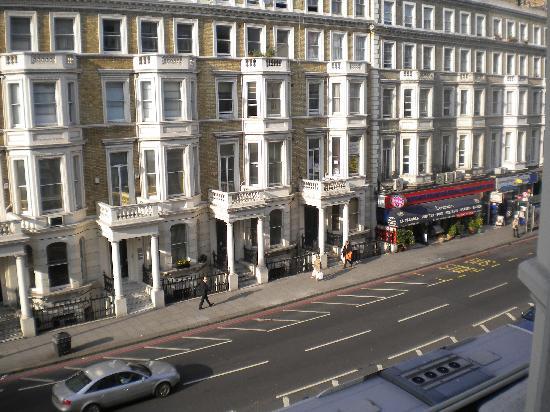
On the day of Ramanujan’s arrival in Plymouth, the weather was surprisingly mild, the sun was shining brightly, and the sky was clear. Neville and his elder brother came to the dock to collect Ramanujan and take him first to London to a reception centre for all students coming from India. Ramanujan was astonished by the sight of white people working manually in the road as the car drew past. In India, he had never seen Europeans doing any manual labour. In the reception centre on Cromwell Road in London, Ramanujan spent three days before Neville took him home to Cambridge. The house was situated on the banks of the River Cam and Ramanujan felt happy there as both Neville and his wife Alice were very hospitable.
Bridge of Sighs over the River Cam in Cambridge

Ramanujan started his mathematical research with Hardy and Littlewood and attended as many lectures as he could. Every student in England works under a tutor who oversees his progress and E.W. Barnes was engaged as Ramanujan’s tutor. One day Professor Arthur Berry was solving problems of elliptic integrals on the blackboard in Kings College. Ramanujan’s face became bright as he was following the lecture. Professor Berry asked him if he was able to follow his lecture or if he had any questions to ask him. Ramanujan stood up and went straight to the blackboard. He wrote the results of the problems, which were yet to be solved, with chalk. Later Professor Berry remarked: “Ramanujan must have reached those results by pure intuition.” Other academics agreed that Ramanujan was the most intelligent of all the top students at that time. Small praise, as we now know that he was the most intelligent mathematician of all time. Hardy, who understood Ramanujan’s greatness, said that if he had been born a hundred years ago, he would have invented most of the formulae, adding, “His profound intuitions and invincible originality made him the greatest formalist of any time.”
St John’s College, Cambridge

Hardy was very proud of Ramanujan. He once wrote: “Ramanujan was my discovery. I did not invent him like other great men, he invented himself, but I was the first competent person who had a chance to see some of his work , and I can still remember with satisfaction that I could recognise at once what a treasure I had found.”
1st Eastern General Hospital, set up at Trinity College, Cambridge


The war made an impact on the work at the university, and army camps and hospitals were erected at the university campus. Many students went to war never to come back. Food was rationed, which made it worse for the strictly vegetarian, like Ramanujan, and his health was impaired. Scanty meals in a cold country gradually made Ramanujan weak and vulnerable to disease.
Despite the tribulations around him, Ramanujan with Hardy’s help published several papers. While the research in mathematics that he was conducting was beyond the comprehension of the holder of a B.A., he had no degree, as he had failed four times in Indian colleges but he desperately wanted one. On 18 March 1916, Ramanujan received his coveted degree for his long paper on highly composite numbers, and he got it from one of the best universities in the world, Cambridge University. He could not have been happier. In the photo, he looks shabby; the legs of his trousers are too short and the buttons of his coat are straining but he was in the middle of the photo as he was the toast of all students.

From the beginning of 1917, Ramanujan wasn’t well. In May he was admitted to a nursing hospital for five months. After that, he stayed in various T.B. sanatoriums. First in Mendip Hills, and then he was transferred to Matlock House in Derbyshire.
Mendip Hospital, Wells, in the grounds of which was located the Mendip Hills Sanatorium
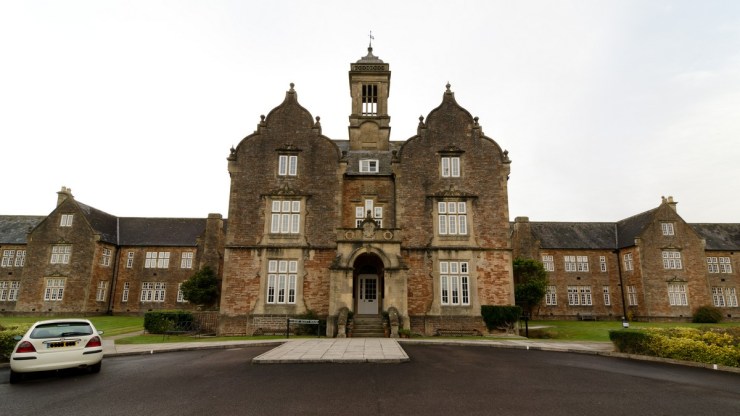
Here, he was under the treatment of three doctors. Even for patients born in this country, windows without glass or no doors were too harsh to tolerate, despite nutritious meals, bed rest, and light exercises. But just imagine what it must have been like for anyone born in a tropical country? Ramanujan suffered terribly from the cold and complained to Hardy in a letter:
“I have been here a month and I have not been allowed a fire even for a single day. I have been shivering from cold many a time and have not been to take my meals sometimes. In the beginning, I was told that I could not possibly have any except the welcoming fire I had for an hour or two when I entered this place. After a fortnight of stay, they told me that they received a letter from you about one and promised me a fire on those days on which I do some serious mathematical work. That day hasn’t come yet and I am left in this dreadfully cold open room.”
Medical knowledge in those days was limited and such treatment was harmful, especially as Ramanujan did not have TB.
“The Promise” by Debbie Wiseman:
To make matters worse, Ramanujan didn’t receive any letters from his wife, Janaki, despite writing to her many times. All the letters from him and from Janaki were intercepted by Komalatammal. Janaki tried several times to hide a letter in the food parcels Ramanujan was being sent from India but all were found and confiscated by her mother-in-law. The father of Ramanujan was annoyed with the unethical behaviour of his wife but did nothing to prevent it. Once Ramanujan wrote to his mother that if she would send Janaki to England, his life would improve as she would take care of him. Without telling Janaki, she refused. It was a dreadful blunder. Had Janaki been with him, the awful death of Ramanujan could have probably been avoided. In such a situation, Ramanujan, not knowing the reason, was deeply offended by not having received any information from Janaki and by his mother’s refusal to send her to England.
Janaki

On 24 January 1918, the names of 104 candidates were read out at a meeting of the society. Hardy admitted that while no one under the age of 35 had previously been elected, and although Ramanujan was only twenty-nine years of age, he was beyond comparison among all other mathematical candidates, and Hardy was worried about his health.
In the meantime, Ramanujan suffered but wasn’t able to confide in anyone. He came to England for mathematics but he was unable to adjust to the people and their alien to him culture. Even Hardy could not become his bosom friend for that reason. He wished that Janaki would stay with him but she didn’t even answer his letters. Alone in an alien country, with fragile health, without his Indian food, and surrounded by a depressing World War I environment, in a moment of confusion, if not madness, Ramanuja did something horrible. He leapt before an oncoming train in a nearby station. The driver had seen him jumping and instantly applied the brakes and succeeded in stopping just in front of him. Despite this, Ramanujan got injured in a fall and was bleeding. He was arrested by the police (in England, suicide is illegal, a criminal offence), and was driven to Scotland Yard headquarters of the London police. Alerted by a telephone call, Hardy reached London and tried to convince the police that as a Fellow of the Royal Society he could not be arrested. When the police found out that Ramanujan was a genius mathematician, not wanting to ruin his life, they set him free,
New Scotland Yard

Ramanujan became weak but hurried along with his research as he had a premonition that he would die before he was thirty-five. On 6 December 1917, he was elected to the London Mathematical Society. E. Hobson and H. F. Baker had not responded to Ramanujan’s letters from India in 1913, but now they were among the eleven mathematicians who had nominated him to become a Fellow of the Royal Society. At the end of the war, Ramanujan was brought to another nursing home near London, Colinette House, situated on the banks of the Thames. It was spacious and well-decorated. Being so much more approachable from Cambridge, Hardy was now a regular visitor, arriving often in a taxi. One day Hardy came to visit Ramanujan in a taxi and remarked about its ‘dull’ number – 1729.
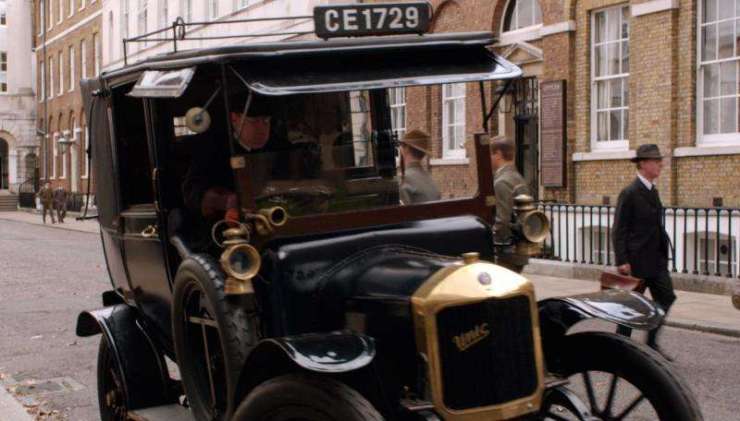
Ramanujan lying on the bed replied, “No, Hardy, it is a very interesting number. It is the smallest number expressible as the sum of two cubes in two different ways.”
For example: 1729 = 12³ + 1³
. 1729 = 10³ + 9³
We can get many numbers that are the sum of one pair of cubes.
For example: 35 = 2³ + 3³ = 8 + 27
. 91 = 3³ + 4³ = 27 + 64
But after 35, 91, numbers could not be expressed as a sum of another two cubes until we reach 1729, because it is the smallest number expressible as the sum of two cubes in two different ways.
The number 1729 has a title; it is called Ramanujan’s Number.
Courtesy of Cheenta:
Trinity College, Cambridge
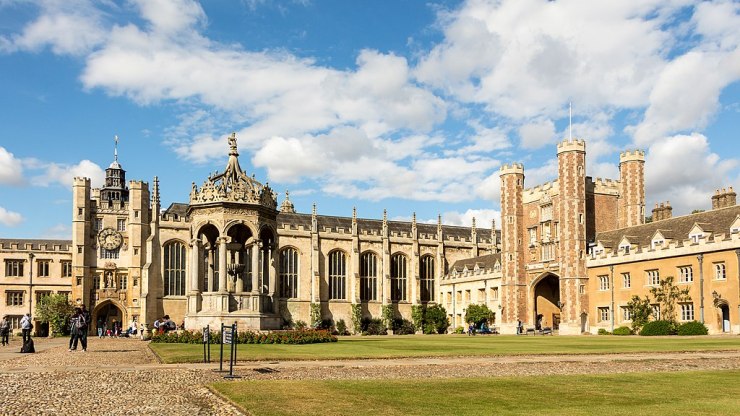
Ramanujan was honoured by his own college, Trinity College, on 10 October 1918, by electing him a fellow. He became the first person from India to achieve this honour. This position gave him 250 pounds per year for six years. From India two pieces of good news arrived; the Port Trust had extended his leave of absence and the University of Madras also granted him a fellowship with 250 pounds a year for six years.
Ramanujan felt overwhelmed with such a change in his circumstances. He had spent his childhood and youth in precarious financial conditions. He didn’t have a job, could only survive and continue his mathematical research thanks to his friend, R. Ramachandra Rao. Now, he had all that money but his progress had slowed down due to his illness.
R. Ramachandra Rao, Ramanujan’s benefactor

On 11 January 1919, Ramanujan wrote to Dewsbury, which indicated his state of mind:
“I beg to acknowledge the receipt of your letter of 9th of December 1918, and gratefully accept the very generous help which the university offers me. I feel, however, that after my return to India, which I expect to happen as soon as arrangements can be made, the total amount of money to which I shall be entitled will be much more than I shall require. I should hope that, after my expenses in England have been paid, £50 a year will be paid to my parents and that the surplus, after my necessary expenses are met, should be used for some educational purpose, such in particular as the reduction of school fees for poor boys and orphans and provision of books in schools. No doubt it will be possible to make arrangements about this on my return.
I feel very sorry, that as I have not been well, I have not been able to do so much mathematics during the last two years as before. I hope that I shall soon be able to do more and will certainly do my best to deserve the help that had been given me.
I beg to remain, Sir,
Your most obedient servant,
S. Ramanujan
If you haven’t yet fallen in love with this extraordinary man, this letter would have to overwhelm you with affection and admiration for him, as he never wanted anything for himself but would help anyone in need. Today, so many people feel an entitlement to everything and anything out there. Ramanujan should be our role model, our daily reminder of how to be a human being in the true and most profound sense of the word.
For his return to India, Ramanujan needed a new passport. On 24 February 1919, he had a passport photo taken. It is obvious that he was very ill, his clothes were two sizes too big; his shirt buttoned on top was loose around the neck. Later, when Hardy first saw the photo in 1937, he wrote: “He looks rather ill, but he looks all over the genius he was.”
The Government of India issued a postal stamp in 1962 on the 75th anniversary of Ramanujan’s birth. It was a replica of that photo. Another postal stamp was issued in India in 2011, on the occasion of his 125th birthday. The other stamp was issued in 2016.



His passport had been made; Profession: Research Student was inscribed in the passport. On 13 March 1919, Ramanujan embarked on the ship S.S. Nagoya for the return trip to India. Among other things, he carried with him a dozen books, a leather trunk filled with papers, and a box of raisins for his younger brothers. While he was traveling his two short notes appeared in the London Mathematical Society on the same day, 13 March 1919. In it, he revealed new congruence properties of the partition function and a new link between the first and second Rogers-Ramanujan identities.
SS Nagoya

All the newspapers of Madras printed the news of his return from England. His fame was now the topic of discussion among his school friends and professors. Madras University had already decided to offer him the post of a professor. Before his arrival in Bombay, the Indian Mathematical Society met there for its conference. All speakers praised Ramanujan for his elevation to the Royal Society from his humble origin. The Journal of the Society printed the news of his return on 1 April 1919.
Mumbai, formerly Bombay

“Cello Suite No. 1 in G Major, Prélude” by Johann Sebastian Bach, performed by Yo-Yo Ma:
Ramanujan disembarked from S.S. Nagoya in Bombay on 27 March 1919. His mother Komalatammal and brother Lakshmi Narasimhan were waiting at the dock to meet him. They had set out from Madras on the twenty-first. Just after alighting from the ship, Ramanujan asked his mother, “Where is she?” Mother was irritated by his question, “Why annoy me over Janaki?” The domestic conflict that affected him so deeply in England wasn’t going to get any easier here. Now, he desperately craved contentment.
About a year previously, Janaki had gone to her father’s house on the occasion of the marriage ceremony of her brother. She did not return and none of her father-in-law’s household tried to contact her. Lakshmi Narasimhan didn’t know where Janaki was staying. She might have been in Rajendram or with her sister in Madras expecting Ramanujan’s arrival. He posted two letters to her asking her to meet Ramanujan in Madras. As all the newspapers were writing about his return, it was obvious she knew he was back. On receiving the letter, Janaki asked her brother to take her to Madras. At first, he wasn’t happy to do so but Lakshmi’s letter changed his mind.
After a few days rest in Bombay, Ramanujan, still not very well, boarded the Bombay Mail, with his mother and his brother, heading for Madras. On 2 April, they arrived at Madras Central Station. Waiting to receive him was his best friend, R. Ramachandra Rao and his old student, K.S. Viswanatha Sastri. Seeing the appearance of Ramanujan, his friend was stricken with grief; he realised that he wouldn’t live long.

The absence of Janaki at the station disappointed Ramanujan. He was helped to board a ‘Jutka’, a two-wheeled, horse-drawn vehicle to take him to the bungalow of a lawyer situated on Edward Elliots Road, a distance of three miles from the station. At the house, South Indian food, so beloved by Ramanujan, was waiting. He dined on many things, among them sambar and yogurt. Ramanujan ate with gusto, saying a few times, “Had I had this in England, I wouldn’t have got sick!”
The South Indian dish of Sambar

A jutka

Presently, many important people began to visit him and offered him houses to live in and money for treatment. Sir Francis Spring arranged to publish his full biography in a newspaper, which appeared on April 6. He was offered a university professorship, which he said, he would accept when he recovered. His doctor, M.C. Nanjunda Rao recommended moving Ramanuja to a lonely place as he disliked the throng of visitors. He was moved to a place called Venkata Vilas on Luz Church Road.
An early picture of Ramanujan with his parents
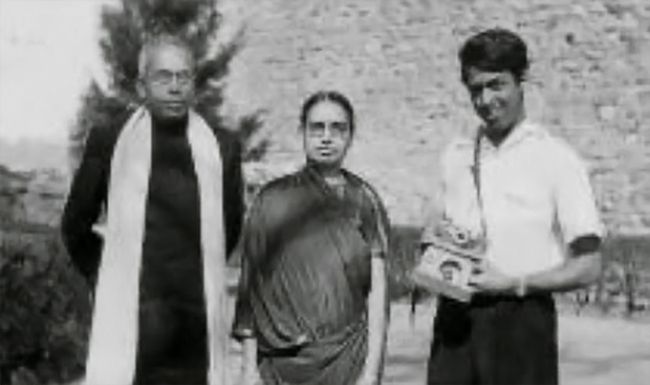
“Songs My Mother Taught Me” by Antonín Dvořák, performed by Tine Thing Helseth and Liverpool Philharmonic Orchestra:
On 6 April, Janaki and her brother reached Venkata Vilas. A week later Ramanujan’s father, grandmother, and younger brother arrived from Kumbakonam to stay with Ramanujan. When Ramanujan had sailed for England, Janaki was thirteen years old, now she was eighteen, and they could talk together which his mother would not allow before. Finally, they realised what had happened to their letters. Janaki became anxious about her husband’s health as he was getting thinner, weaker, and paler, often spitting phlegm. He also was depressed and gloomy. The family feud kept Ramanujan disturbed in his last year of life. The quarrels between the women were about the distribution of money, especially resented was Ramanuja’s decision to give his scholarship money to the poor.
Ramanujan and his wife Janaki

Although Madras city is on the banks of the Bay of Bengal, it is very hot and uncomfortable in summer. The average temperature hits 40-42 degrees C, and Ramanujan was advised to move to a cooler place, up in the hills, like Coimbatore. His mother preferred that he stay at Kodumudi, a little town famous for its Magudeswara temple.
Magudeswara Temple in Kodumudi
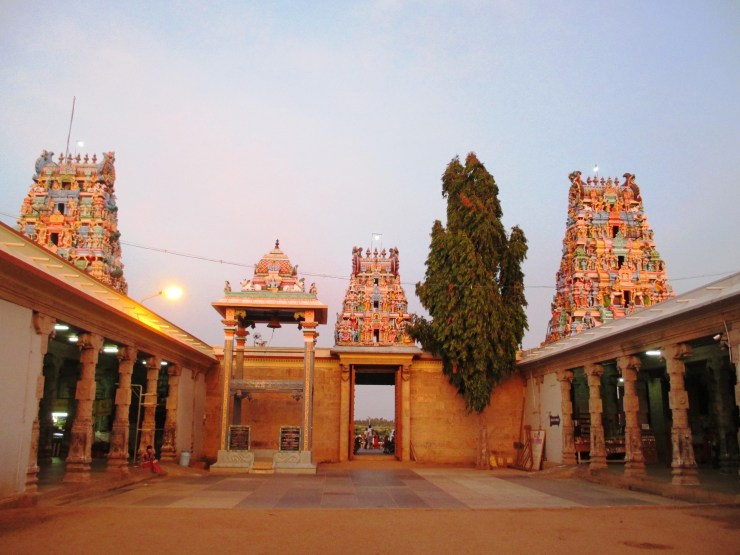
“Bridge Over Troubled Water” by Simon and Garfunkel, performed by Katie Melua:
Ramanujan stayed there for two months. Janaki took over responsibility for his health, day and night. She gave his medicine in accurate doses and at the correct time, and Ramanujan often told her, “If only you had come with me to England, perhaps I would not have fallen ill.” At the beginning of September, with cooler weather, Ramanujan left with his family Kodumudi and arrived the next day at Kumbakonam. Komalatammal already had arranged a spacious house for the members of her family and relatives as well as for her son’s proper care. Their own house was far too small.
Kumbakonam

Shortly after, Doctor P.S. Chandrasekhara Iyer, a professor of Hygiene and Physiology at Madras Medical College, and a renowned tuberculosis specialist was engaged to look after Ramanujan. After examining him for over one hour, the doctor concluded that Ramanujan had TB. After being treated in England in various nursing homes and now in India for several months, all in vain, Ramanujan’s health was deteriorating fast. Worse, he had given up hope, which was the worst thing to do.
At the doctor’s insistence, Ramanujan was moved to Madras for the winter, and he, his wife, and his mother arrived at the beginning of January 1920. They moved house twice before finally settling in a house named Gomera. Ramanujan had not written any letters to Hardy after he arrived in India. On January 12, 1920, he wrote to Hardy informing him about his last discovery of the mock-theta functions. A part of the letter: “I am extremely sorry for not writing you a single letter up to now…. I discovered a very interesting function recently which I call ‘Mock’ theta functions. Unlike the ‘False’ theta, they enter into mathematics as beautifully as the ordinary theta functions. I am sending you this letter, with some samples.”
No one could imagine that a person on his deathbed, could be engaged in research or discover a profound mathematical theory. Yet, it was possible for Ramanujan since he defeated everything by sheer determination, perseverance, and the power of his passion for mathematics. Many mathematicians expressed the opinion that his discovery of the mock theta function on his deathbed was enough to make him immortal in the mathematical world.
Ramanujan’s mock theta function and theta functions


Komalatammal met with G.V. Narayanaswamy Iyer, a famous astrologer. After studying the horoscope of Ramanujan he conveyed the opinion that the chart indicated either a man who would die at the height of his fame or one who if he were to live a long life would remain obscure. At that point, all hope was lost.
We know from the reminiscence of Janaki about the last few days of Ramanujan. He became skin and bones and complained of severe pain in his stomach and legs. Janaki would heat water in a brass vessel and apply warmth and moisture with a towel dampened in hot water to lessen pain and discomfort. His pathetic condition could not prevent him from working. Janaki would prop him up on a few pillows and gave him his slate, from which he would transfer the results to paper. Janaki had the duty to keep all Ramanujan’s mathematical papers in the leather trunk which he had brought from England. From time to time his wife would give him with a spoon a sip of diluted milk to soothe his parched mouth. Ramanujan remained completely absorbed in maths and would not talk to anyone coming to visit. He was writing on his slate even four days before he died.
Ramanujan became unconscious at dawn on 26 April 1920. Janaki had not moved from his bedside. After about two hours he breathed his last. He was thirty-two years, four months, and four days old. India lost a rare genius.
“Violin Concerto No. 1 in A Minor, II. Andante” by Johann Sebastian Bach, performed by Daniel Lozakovich and Kammerorchester des Symphonieorchesters des Bayerischen Rundfunks:
Later examination revealed that Ramanujan died of suspected Hepatic Amoebiasis which affected his liver; he did not have TB.
The funeral of Ramanujan was arranged at noon; none of his orthodox relatives came to the cremation ground near Chetput. He had perpetrated a sin by crossing the sea, and a trip to Rameswaram temple, which is situated in the sea and connected by rail and road, for purification planned by his mother was postponed due to his poor health.
His best friend, R. Ramachandra Rao, and his son-in-law arranged the funeral. Ramanujan’s mortal body was put to the flame at 1pm.
Letter to G.H. Hardy advising of Ramanujan’s death

Ramanujan left behind a vast treasure of mathematics for the next generation of humankind. Perhaps he could not assess during his lifetime the value of his legacy left for us. It is said that mathematics is the mother of science. Now, the theorems and equations of Ramanujan are being applied in various branches of science and technology. Computer science, polymer chemistry, even cancer research depend on Ramanujan’s work. In his time, flight into space was a dream of humankind; his mathematics is being applied in space technology and a dream has been converted into reality. When engineers want to make a better blast furnace for iron extraction, they have Ramanujan’s formula. Scientists of the next generation are astonished by the work of Ramanujan. His formulae are applicable to subjects, which were unknown in his time. Ramanujan will be forever the inspiration to those students from poor backgrounds who after reading the story of his achievement will pledge to follow in his footsteps to success.
Ramanujan’s birthdate as the basis of a magic square he created

PART 2 of ANCIENT INDIAN MATHEMATICIANS
As are the crests on the heads of peacocks,
As the jewels on the hoods of cobras,
So is mathematics at the top of all sciences.”
The Yajurveda, 600 BCE
The oldest known mathematics texts in existence are the Sulbasutras of Baudhayana, Apastamba, and Katyayana of the Vedic age. The Sulbasutras had been estimated to have been composed around 800 BC, but the mathematical knowledge existing in India is much more ancient (3000 BC or even as discovered recently around 10,000 BC). Astronomy, geometry, trigonometry, and algebra were all known from times immemorial. Ancient Indians had an idea of a geometric theorem which is known as the ‘Pythagoras theorem’ much before Pythagoras (580 – 500), the Greek philosopher and mathematician was born. They used to apply this theorem in various geometric constructions.
“Geometry is knowledge
of the eternally existent.”
Pythagoras
BAUDHAYANA (800 – 740)
Baudhayana was one of the oldest mathematicians of ancient India. He was connected with the Yajurveda School and was the author of the Baudhayana Sutras, which concern dharma, daily rituals, Vedic sacrifices, etc. He authorised an addendum to the Vedas. Ancient Indian mathematical erudition was composed entirely in verses. Difficult sutras could be easily memorised and the knowledge was orally transmitted to successive generations. This system was foolproof as the perishability of writing materials could not stop the propagation of knowledge. What Baugdhayana discovered in ancient times was so mind-blowing for us, modern people :
He gave us a method of constructing a circle equal in area to the area of a square.
He was the first mathematician in the world who had calculated the value of Pi: Pi = 3.114
His Baudhyana Theorem that he discovered at least 200 years before Pythagoras was born. He described his theorem in his book
‘Bauthayana Sulbasutra’. The shloka (verse) that describes his theorem is translated as thus:
‘A rope stretched along the length of the diagonal produces an area which the vertical and horizontal sides make together.’
Baudhayana used a rope as an example to make the theorem comprehensible to everyone. Ancient Indian mathematicians described their mathematical results in simple shlokas. a few sets of squares are given in the Sulbasutra:
3² + 4² = 5² 5² + 12² = 13² 7² + 24² = 25² 8² + 15² = 17² 12² + 16² = 20² 12² + 35² = 37²
“With calculus, I can
predict the future.”
Steven Strogatz
MANAVA (750 – about 690 BC)
Manava was interested in mathematics, using it for a religious reason. He was also a skilled craftsman and was able to construct altars. Manava’s geometric Sulbasutra describes constructions of circles from rectangles and squares from circles. He calculated the value of Pi as Pi = 25/8 = 3.125
“Empirical and expected
results are the same.”
The law of large numbers
APASTAMBA (600 BC – about 540 BC)
Apastamba was from a family of Brahmins dedicated to the study of the Yajurveda. His Sulbasutra contains principles of geometry needed for Vedic ritual. His work consisted of six chapters.
“Nature is the most fertile
source of mathematical
discoveries.”
Fourier
PANINI (520 – about 460 BC)

Panini was born in a place named Shalatula on the bank of River Indus. He is known as the founder of Sanskrit Grammar but he was also a great mathematician. Because of this his Grammar work, Ashtadhyayi was written in a precise scientific way. As with Ramanujan’s work being used in computer science, there are similarities between a computer programming language and Panini’s Grammar.
A 17th-century birch bark manuscript of Panini’s grammar treatise from Kashmir
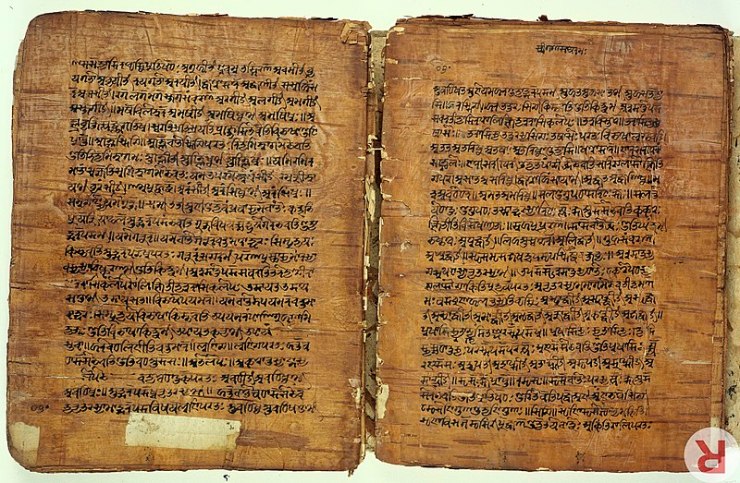
“The sum is the same in
every direction.”
The Rhind papyrus
KATYAYANA

Katyayana lived in the third century BC in the North-West region of India. He was a priest, Sanskrit grammarian, and mathematician. His work Sulbasutra contains 102 sutras (formulas). He was an expert altar builder. Katyayana discussed the geometrical proportions, the different measures, relative positions, and special relations of the various vedis (altars) in connections with their constructions. He was the first person, of whom we know, that gave a description of the measuring tape. This is a fascinating fact which I love, a measuring tape in the third century? Bless him. His other work was Sanskrit grammar, which was an elaboration on Paninian grammar.
“Number is the cause
of gods and daemons.”
Pythagoras
ARYABHATA I (476 – 550 AD)
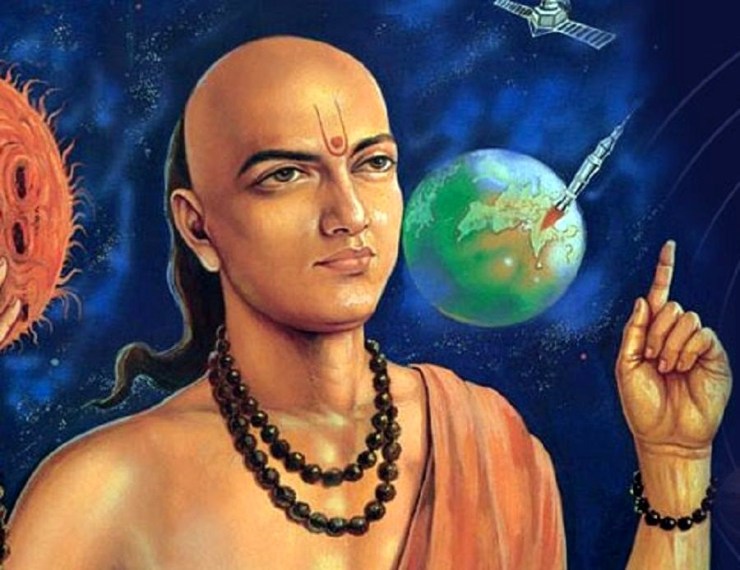
I wrote about this greatest of ancient scientists, a mathematician and astronomer, in part 1 but it isn’t ever enough to write about a genius like Aryabhata. He worked in Pataliputra and was also, according to some sources, the Kulapa (Vice-Chancellor) of the illustrious Nalanda University of ancient India. His work was, and still is, of immense importance. He completed his work in 499 AD when he was 23 years old. Aryabhatiya is a treatise in Sanskrit on mathematics and astronomy. In his work, he didn’t use the Brahmi numerals. Continuing the tradition from Vedic times, he used letters of the Sanskrit alphabet to denote numbers, expressing quantities in mnemonic verses.
He gave us the rules for the extraction of square and cube roots by the arithmetical method which is used all over the world today.
He was the first Indian astronomer to state that the Earth is spherical and rotates on its axis. He explained that the apparent daily east-west motion of the stars, moon, planets, and stars is due to the rotation of the earth from West to East. In the same way that someone in a boat going forward sees unmoving objects on the bank going backward. He calculated the time of one sidereal rotation of the Earth as 23h 56m 4.1s. The modern value is 23h 56m 4.09s. The difference is very small.
His work Aryabhatiya consists of 108 verses and 13 introductory verses and is divided into four padas or chapters.
- Gitika pada (13 verses):
It is also called Dasagitika or the ten Giti Stanzas For writing a number r, Aryabhata used the expression Sthanat Sthanam dasagunam syat (from place to place each is ten times the preceding). It is based on a place-value notation. He expressed revolutions of heavenly bodies based on place-value or decimal system. In a yuga*, the revolutions of the Sun are 4320000, of the Moon 57753336, of the Earth eastward 1582237500, of Saturn 146564, of Jupiter 364224, of Mars and Venus the same as those of the Sun.
*In Hinduism, a yuga is a large period of time as it relates to the past, present and future. It is mostly used to describe one of the four dharmic ages — Satya Yuga, Treta Yuga, Dvapara Yuga or Kali Yuga — or a cycle of the four ages, Chatur Yuga.



It was just a sample of the first chapter.
“The whole is greater
than the parts.”
Euclid
VARAHAMIHIRA (505 – 597 AD)

Varahamihira was of the nine jewels (navaratnas) of the court of the legendary king Vikramaditya of Malwa, Madhya Pradesh. He lived in Avanti (today Ujjain). He was an astronomer, mathematician, and astrologer. His main work is Pancha-Siddhantika dated 575AD. This work is a compilation of five earlier astronomical treatises namely the Surya, Siddhanta, Romaka, Siddhanta, Paulisa Siddhanta, Vasishtha Siddhanta, and Pitamaha Siddhantas. He was the first person to mention that the shifting of the equinox is 50.32 seconds.
Another work of his is the Brihat-Samhita. It covers many subjects, including astrology, planetary movements, eclipses, rainfall, clouds, architecture, manufacture of perfume, matrimony, growth of crops, gems, pearls, and rituals.
“It is given to us to calculate,
to weigh, to measure,
to observe; this is natural
philosophy.”
Voltaire
(writing on ancient Indians)
BRAHMAGUPTA (598 – 660 AD)
He was one of the greatest mathematicians and astronomers of ancient Indian time. I covered his work extensively in part 1.
BHASKARA I (600 – 680 AD)

He was born at Bori in the Parbhani district of Maharashtra. He got his education from his father, also an astronomer. He dared to deviate from tradition and he was the first to use the Brahmi numerals in the Indian decimal system with a circle for zero. He used prose in his work. His commentary on Aryabhata’s work, Aryabhatiya bhasya, written in 629 AD, is the oldest known prose work in Sanskrit on mathematics and astronomy. He became famous for writing a commentary on Aryabhata’s work. Bhaskara’s other two works are Mahabhaskariya and Laghubhaskariya.
“Geometry is knowledge of
what always exists.”
Plato
SRIDHARACHARYA (870 – 930 AD)
He was born in Bhurishresti village in South Radha (at present Hubli, Karnataka). His father’s name was Baladevacharya and his mother’s Acchoka. According to the opinion of some historians, Sridharaharya was born in Bengal while others place him in South India.
Sridharacharya wrote a book named Vyaktaganita similar to Bhaskaracharyall’s Lilavati. He wrote another book Ganitasara by name. It contains the theory of Arithmetics and Mensuration. His other famous book is Trisatika; this work contains 3000 shlokas (verses) regarding Arithmetics, Algebra, and Geometry.
“Pi is not merely the ubiquitous
factor in high school geometry
problems; it is stitched across
the whole tapestry of mathematics.”
Robert Kanigel
Bateswar
In 880 AD, Bateswar was born at Anandpur in North Gujarat. His father was Mahadatta Bhatta. During his period he was renowned as one of the best mathematicians in India.
He wrote three books:
Karansar – written in 899 AD when he was 19 years old.
Bateswar Siddhanta contains 1226 verses.
Goal is a complete work, as yet only partly discovered
“The principal object of Algebra
is to determine the value of
quantities which were before unknown
expressed in known numbers.”
Leonhard Euler
ARYABHATA II (920 – 1000 AD)
A solar eclipse
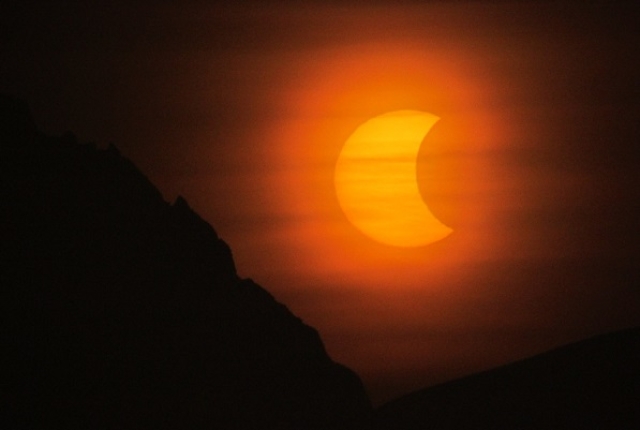
He was a mathematician and astronomer, author of the eminent work Mahasiddhanta. His treatise consists of 18 chapters. It was also written in the form of verse in Sanskrit. The initial 12 chapters cover the topics of the longitudes of the planets, lunar and solar eclipses, the estimation of eclipses, the lunar crescent, the rising and setting of the planets, the association of the planets, with each other and with the stars,
Ancient Indian mathematicians tried their best to give accurate sine tables since they were essential to calculate the planetary positions accurately. Aryabhata II constructed a sine table which was accurate up to five decimal places.
I have to finish this glory list of ancient Indian scientists, otherwise you, the readers, might lose the will to live.

“Jana Gana Mana” by A.R. Rahman, performed by Lata Mangeshkar (courtesy of Sa Re Gaan):
Courtesy of Point of Uncertainty:

Dear Arun,
I am overwhelmed by your generous beyond words praise! Blessings!
Joanna
LikeLike
You’re right, Arun ji, excellence is the hallmark of Joanna’s posts. Thank you so much for your kind words that mean a lot. Kind regards 🙏💐
LikeLike
History revisited with this post full of great information well compiled!
I was not aware of many facts earlier like the following:
” Prof. Hardy, while rating geniuses on a scale of 100, put most of them in the range of around 30, giving a rating of 60 to the rare exceptions. However, for Ramanujan, he suggested, only the value of 100 will fit.”
Beautiful post!
Happy writing…💐💐
LikeLiked by 2 people
Reblogged this on B +Ve!!.
LikeLike
Thank you, Debasis, for your wonderful gesture in re-blogging the post about Indian genius, Ramanujan.
Nothing would make me happier than knowing that his name and the scientific achievements of the Indian nation are known to as many people as possible.
Joanna
LikeLike
I enjoyed reading more about Ramanujan, Joanna. Your writing caused me to feel so such empathy for him. (And I agree, if he’d had his Indian food all along, he probably wouldn’t have gotten sick!) How sad that his short life & his mother robbed him of time, love, & attention from his beloved. I was pleased to read that she (his wife) was there at the end. Thank you for sharing information on this brilliant, compassionate soul! 🌞
LikeLike
Thank you, Lisa, for your kind comments. The tragic fate of Ramanujan made such an impression on me that I had to write about it. Thank you again, Lisa, for reading. Greatly appreciated.
Joanna
LikeLiked by 1 person
Thank you so much KK Ji for your comments. Best regards 😊 🙏
LikeLiked by 1 person
Thank you Joanna ☺️🙏
LikeLike
🙏☺️
LikeLike
👍🏽💐
LikeLike
Fantastic and concise account, Joanna! He was and is an inspiration to all everywhere. I can’t imagine how brilliantly exhilarating it must have been to discover ideas we take for granted today. I loved this statement – “His profound intuitions and invincible originality made him the greatest formalist of any time.”
LikeLiked by 1 person
Thank you, D, for your wonderful comments! Ramanujan’s life story was one of my aims, the second one was to show the amasing scientific achievements of the Indian nation over the millennia.
I wanted to inspire the young generation like you, D, to follow in his footsteps and and discover things we cannot even dream of today. That is why I mention NASA in my comment for you
. Please look up also part one of this post as it refers to the ancient discoveries of Indian mathematicians. If you would like to see unknown photos of space scientists in India transporting parts of the space equipment on the bicycle, look up the post of Narayan Kaudinya, Road to Nara, as he writes passionately about India’s scientific achievements.
Joanna
LikeLike
Thank you Joanna for this truly epic post. There is so much to take in that I will have to return and probably return more than once (as I’ve said before mathematics and me! 🤔). Have a great week 💌💝💖🌹🙋♂️
LikeLiked by 1 person
Thank you, Ashley, for your delightful presentation of commenting! I hope that you are tempted to come back as the maths are minimal but Ramanujan’s story is interesting and inspiring.
Joanna
LikeLike
I love your first picture so brilliant in reflection and angles Joanna! What a gift to all of us to benefit from your fabulous compilation of history of indian mathematics. I loved hearing more about these amazing men. It was compelling and appreciated! Thank you and so well done!
💖💖💖
LikeLike
Great work Joanna! 👏🏻 👌🏻❤
LikeLike
What a great post, full of information
🙏🙏
LikeLike
Thank you, Nitin, for your kind comment. As you are erudite writer I love to read, your words are greatly appreciated!
Please, don’t miss next week post, it is about India, and wholly spirit liftig!
Joanna
LikeLiked by 1 person
The depth and detail of this post, Joanna, gives witness to your engagement with India, its peoples and their creative genius in the field of mathematics. That they demonstrate the complexity and beauty of nature can be explained with math, in a time which preceded Galileo by a millennium although this quote comes from him: “The great book of nature is written in mathematical language.”
Your biography of Srinivasa Ramanujan brought a more complete picture of this simple man who was a genius. It is sad that his mother could not accept his wife, Janaki, as another woman who nourished her son. It does seem that he would have lived longer and been more productive in the world of math if she had gone with him to England.
The final video, from Point of Uncertainty, presents the power structure in a negative light. Several “underlings’ in this video could have been brighter lights in the field of mathematics if they had been appreciated by their contemporaries who were more elevated in the hierarchy of the power structure. The pattern of the powerful stifling the creativity of the less powerful continues!
Another informative master piece for your readers. Thank you for your sharing your creations.
Stewart
LikeLike
Thank you, Stewart, for your wonderfully analytical comments! You are right, I have an affinity with India, the oldest civilization on earth. I can’t put inadequate words how happy I am when a reader takes time and reads every detail of the story and comments as eloquently as you do, Stewart. Thank you!
Joanna
LikeLike